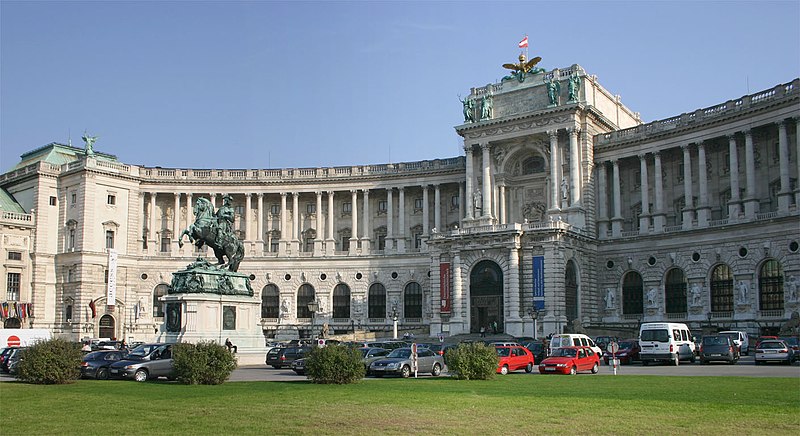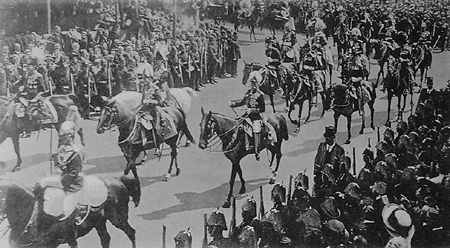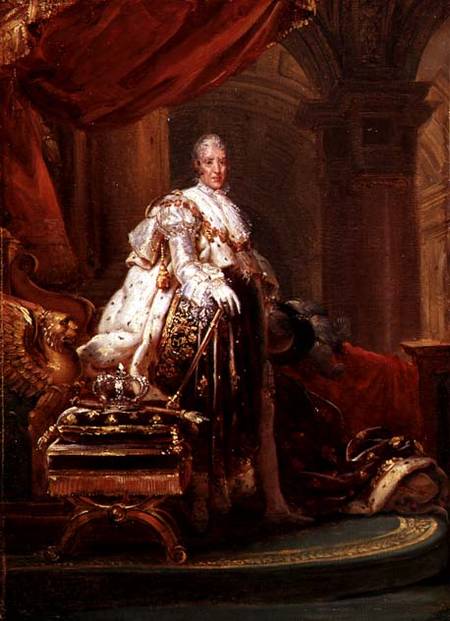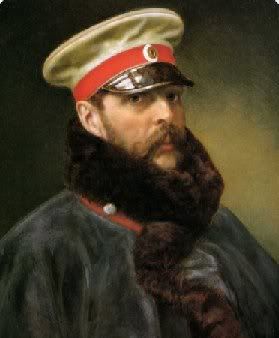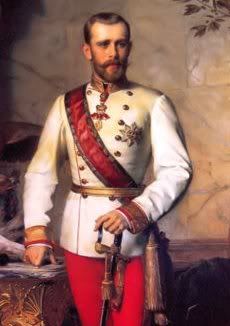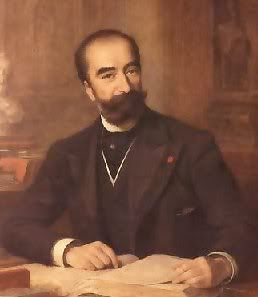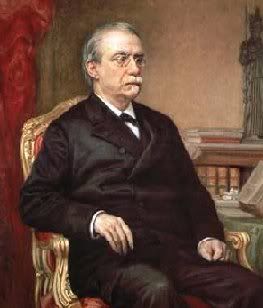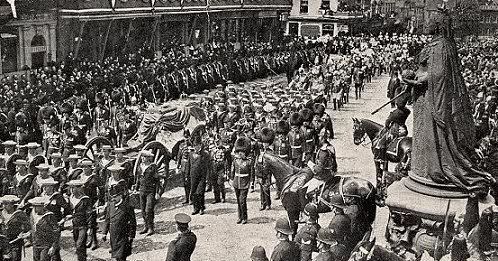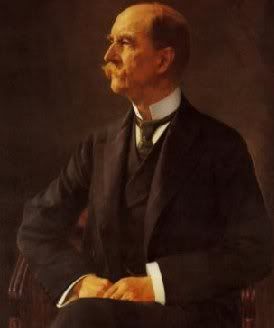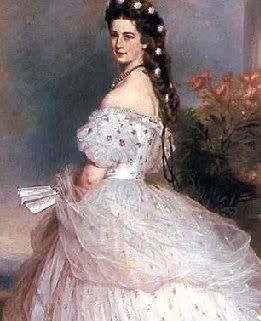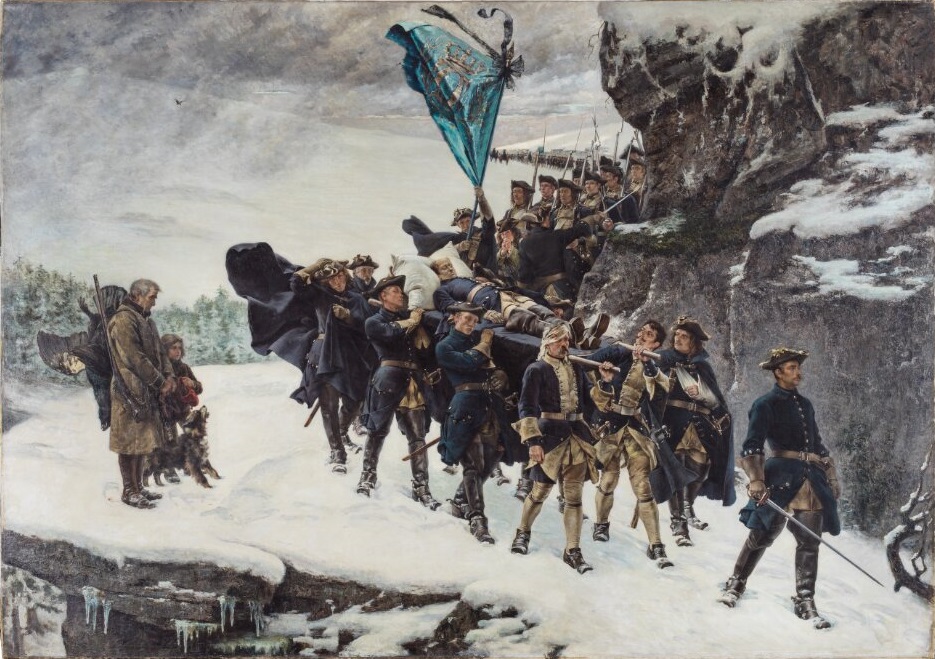The War Path
(1936-...)
The Scourge of Terror (1871-1914)
2nd Part: The ‘New Jacobin’ Terror
Taken from “
Ghost Terror: The Secret History of Neojacobinism”, de
Steve A. Clavell, Offspring Editions, 2003.
Influenced by the writtings of Max Stirner, to whom nothing but sheer violence and straight rebellion could save the world for utter decadence, and Nechaiev, Bakunin’s disciple, who glorified terrorism, the ‘New Jacobins’ entered into a new phase of random violence and wantom destruction. Even if we cannot call them ‘anarchists’, by this time the ‘New Jacobins’ had definetively departed of its originals roots. In the years that followed, the Neojacobinism grew so mixed with the most radical Anarchists ideas that they became one. Their credo spread through Europe, having a great echo in Spain and Italy, like wildfire, as some kind of plague that gave rise to the well-know lines of a poem by the Spanish poet Rafael Alberti:
Un fantasma recorre Europa, el mundo. (‘A Ghost Stalks Europe, the world’)
ellos le llaman camarada. (‘they call it Comrade’)
Aleksandr II Nikolaevich, Emperor and Autocrat of All the Russians, Grand Duke of Finland and King of Poland
A season of violence took place during almost thirty years that was attributed to the radical ‘New Jacobins’ . With no apparent purpose in their actions, the ‘New Jacobin’ terror would change the face of the world for good, but not as its thinkers had dreamt. Wilhelm I of Germany, who was parading with his daughter, the Grand Duchess of Baden in their carriage on May 11, 1878, is shot twice by Max Hödel, who would be beheaded for his action. Hardly a month later, on June 2, Karl Nobiling shot him in another failed assassination attempt. Nobiling then shot himself in the head. Alfonso XII of Spain suffered two murder attempts in 1878 and 1879, and Umberto I of Italy was attacked by an ‘New Jacobin’, Giovanni Passannante, during a parade in Naples on November 17, 1878. The king, even if he warded off the blow with his sabre, was severely wounded in the thigh before the Royal Guards could intervene. For his hard-line politics, Umberto would be was attacked again, by an unemployed ironsmith, Pietro Acciarito, who tried to stab him near Rome on 22 April 1897. This wouldn’t be the last attempt on his life.
In 1881, the Tsar Alexander II (1818-1899) of Russia survived a bomb attack which killed 56 bystanders. He was returning from reviewing the Life Guards of the Reserve Infantry and the Life Guards of the Sapper Battalion regiments when tree Neojacabin terrorists, Nikolai Rysakov, Ignacy Hryniewiecki e Ivan Emelyanov thew three bombs -one of them did not work- under the horses' hooves. The following explosion killed one of the Cossacks ninety people on the sidewalk. However, the tsar, who, since 1866 had suffered five assesination attempts, emerged shaken, injured in both legs. Completely surrounded by the guards and the Cossacks, the tsar made his way to the Winter Palace. Thus the Tsar managed to survive the 6th attempt against his life. Despiste of the complaints of his heir-apparent, Alexander (1845-1894), he did not reverse his reform movement and went on with the plans for an elected parliament, somewhat reduced and quite controlled by the Tsar, or Duma, which were completed the day before the attempt. Implemented in his reign, the Duma would reach full development under Alexander II’s successor, his grandson Nicholas II.
This attempt, even if unsusccessful, inspired many other similar attacks on the rulers and aristocracy around the World. On November 7, 1893 there is a perfomance at the Liceo Theatre in Barcelona, Catalonia of Rossini's "Guglielmo Tell," the third act of which figured, curiously enough, in the programme at the Paris Opera House on the night when Louis XX was deposed in 1871. The performance at the Liceo was in progress (the second act of the opera having begun) when all at once two bombs were flung in rapid succession from the gallery into the stalls. Only one exploded, but twenty-three people, including nine women, were killed by it, and forty others were injured, some in a truly terrible manner. A very large number of arrests ensued, both in Catalonia and in the neighbouring countries, Spain and France. Everybody suspected of being a Neo Jacobinist was seized and carried to Monjuich by virtue of a decree issued by the government, which suspended the Constitution in the country and gave the authorities wholesale powers of arrest. The terrorist, Santiago Salvador, was executed on the 20th of the same month.
The ‘New Jacobin’ rage against the monarchies kept going on: in 1894 Auguste Reinsdorf tries to kill the Kaiser Wilhelm I, but fails. In 1887, four Russian students are executed for his role in a failed attack -the seventh- against Alexander II. A fifth member of the conspircy, an Alexander Ulianov, saves his life because his younger brother, Vladimir Ilyich, betrays to the Okhrana the conspiracy in exchange for the life of his brother. An odd event is the death, in strange circunstance, of the Crown Prince Rudolf of Austria, found dead in Mayerling, a hunting lodge in Lower Austria on January 30, 1889. The initial official explanation, that Rudolf had suffered heart failure, did not hold up well, and many stories were floated about his death, as those that claim that he was killed by Austrian security officials, in response to the Prince’s suspected pro-Hungarian sympathies, or by French agents because he refused to participate in the deposition of his pro-German father. Of course, it goes without saying that some newspapers hinted at the possibility that the death has been caused by some Neo-Jacobin “avenger”. Even if this “fact” has been proved to be lacking of any real base, it is, still, a quite commonplace topic among conspiranoic theoreticians.
Archduke Rudolf (1858-1889), Crown Prince of Austria, Hungary and Bohemia.
Spain suffers plague of bombing from 1893 to 1897, which would resume again in 1906; by late 1893 Neojacobin terrorists were particularly active in France, as the actions of Jacobins’ François Claudius Koënigstein (“Ravachol”) (1859-93) prove. Those attacks culminated in the bombing of the Chamber of Deputies in Paris in December. Shortly after, a ‘New Jacobin’ , the italian Sante Geronimo Caserio, tried to stab unsusccesfully French President Marie Francois Sadi Carnot in 1894. This attempt would be the last straw for the army, who, tired of the unability of the government to tame the chaos, would threaten with a coup d’etat. To avoid this, a ruthless clampdown was released by the French authorities which effectively ended the terrorist campaign in France.
Until then, Britain remained unaffected by the anarchist campaign, although Irish Fenian bomb attacks had occurred in England as early as the 1860's. Then, suddenly, on February 15th, 1894 the Royal Observatory in Greenwich Park, London, was subject to a bomb attack by the French Neojacobin Martial Bourdin (1868-1894). Later on the day of the explosion, police raided the Club Autonomie in London, arrested all of those inside and discovered that Bourdin had been a member of this club which had attracted mainly foreign Neojacobins. Many were deported but no charges were made.
Marie Francois Sadi Carnot (1837-1898)
In June 1896, a bomb was thrown at the Corpus Christi procession in Barcelona. The attack precipitated an aggressive reprisal against Spanish ‘New Jacobins’ , Socialists and Republicans. Thus, four hundred alleged revolutionaries were jailed at Montjuïc Fortress, overlooking Barcelona. Many died due to subsequent tortures. Of the 87 prisoners taken to the tribunal, eight got death sentences and nine were condemned to long imprisonment. In revenge for the Montjuïc persecutions, an Italian ‘New Jacobin’ , Michele Angiolillo, arrived to Catalonia from Paris via London, using a false identity. There is some evidence that Angiolillo originally had in mind killing one or two members of the Catalan government. Discovered, he run to Madrid, in order to kill a member of the Spanish royal family, but in the end he murdered Cánovas del Castillo instead.
In this chain of gruesome events can be placed the murder of the Austrian Empress Elisabeth, ‘Sissi’, on September 10, 1898. She had been walking along the promenade of Lake Geneva about to board a steamship for Montreux with her lady-of-courtesy, Countess Sztaray, when she stabbed in the heart with a needle file by a young ‘New Jacobin’ named Luigi Lucheni. Reportedly, her assassin had hoped to kill a prince from the House of Orléans and, failing to find him, turned on Elisabeth instead. As Lucheni afterward said, prior to his execution, "I wanted to kill a royal. It did not matter which one."
Antonio Cánovas Del Castillo (1828–1897)
On April 4, 1900, Albert Edward, Prince of Wales, is assesinated by Jean-Baptiste Sipido, who shot at him in protest over the Boer War. Sipido escaped to France; the perceived delay of the Belgian authorities in applying for extradition, combined with British disgust at Belgian atrocities in the Congo, worsened the already poor relationship between the United Kingdom and the Continent. When Victoria dies, her grandson becomes King George V at the age of 35. Although he and his wife, queen May, occasionally toured the British Empire, George preferred to stay at home with his stamp collection, and lived what later biographers would consider a dull life because of its conventionality. This fact did not help to improve the relationships with the Continent. It mus be mentioned that when, on January 22, 1901, Queen Victoria died, at her bedside for much of the end of her life was her devouted grandson, kronprinz Wilhelm and her father, Kaiser Frederick III (1831-1900). Many British citizens were touched by this display of filial affection from the heir of the Emperor of Germany.
And in 1901, Humbert I of Italy is assassinated by Gaetano Bresci, an Italian-American ‘New Jacobin’ from New Jersey, whose sister had been killed when the army open fire with his guns against an unarmed crowd of protestors in Milan. Bresci returned to Italy and, in Monza, where the king was visiting on July 29, 1900, he shot dead Humberto. These terrorist acts helped the public to see the ‘New Jacobin’ as potential killers. The newspapers of the time are filled with stories about ‘New Jacobins’ and their bloody attacks. In America, especially in the larger cities like Chicago, New York and Cleveland, there was a sort of terror about ‘New Jacobins’ , fueled by a freewheeling, speculative press that knew no bounds. Even if the panic did not reached in Europe the level that we can see both in the United States and their southern neighbour, the Confederate States of America, it was also a fact to be considered carefully, as we can see in the hysterical reaction of the crowd when, on the morning of November 15, 1902, King Leopold of Belgium, who was returning from a ceremony in memory of his recently-deceased wife, Marie Henriette, was shot by Gennaro Rubino. Leopold was not injured, and Rubino was immediately mauled by the crowd and then rescued by police. The infuriated crowd was mad with rage and the police could not control the situation. Finally, the muderous mob, which shouted alternately, "Kill him!" and "Long live the King!" overcame the policemen and lynched Rubino. After this, a wave of fear seemed to rule the world for some months.
Funeral procession of Albert Edward (1841-1901), prince of Wales
Even if unrelated with ‘New Jacobinism’ terror, the world was against shocked when the kronrpiz Wilhelm of Germany was shot by Dietrich Weiland during a visit to Bremen on February 6 1901. Unhurt, Wilhelm later stated when he knew that his attacked was captured by the police: “It was God’s will that the sun blinded Weiland”. The would-be killed gave confusing answers to the police regarding his motives to attack Germany’s future kaiser, who, in an unexpected move, pardonned Weiland. Stunned by these dreadful events, the world had to endure more killings: on September 5, 1901, the president of the United States, William McKinley, was attacked by Leon Frank Czolgosz, though he was not injured. McKinley, however, had run out of luck, as he died just eight days later, when he was hit by a cab in New York City. Theodore Roosevelt would be sworn in as the President of the USA on September 14, 1901. Two weeks later, an obscure and unknown gunman tries unsusccesfully to kill the Spanish Prime Minister, Práxedes Mateo Sagasta (1825-1903).
Even the king of Spain, Alfonso XIII, was targeted. Mateu Morral, a Catalan ‘New Jacobin’, tried to kill him and his wife, Victoria Eugenia, on May 31, 1906, the day the two were married. The monarchs escaped the attempt with just spots of blood on the queen's dress, but several bystanders and horses died. After the attempt, Morral tried to get lost but he was recognized by several people and hunted down by the authorities, he appeared to be surrendering peacefully. However, he managed to shoot and kill the guard who was taking him to Torrejón de Ardoz prison, and to commit suicide the moment after.
George I of Greece (1845-1916)
After this, it seemed that the ‘New Jacobin’ age of terror would slowly come to an end. However, the world would be shocked again from time to time. On November 12th, 1912, the Spanish Prime Minister, José Canalejas Méndez, is murdered by the ‘New Jacobin’ Manuel Pardiñas Serrano. Canalejas was looking some books in a bookshop called Librería San Martín, in Madrid, when Pardiñas shot him trice and commited suicide afterwards. Hardly a year later, on March 18, 1913, Alexandros Schinas tried to shot King George I of Greece (1874-1916) in the back from a distance of two paces while the king was walking alone in Thessaloniki near the White Tower. The gun, however, did not work, a fact that, surely, saved the king’s life. Various theories on the motives of Schinas circulated later, including that his action was directed by Bulgaria as a form of revenge for its lost territories or Austria-Hungary for political reason, however there is no evidence for any of them. The last outburst of the ‘New Jacobin’ rage would take place on January 8, 1913, when three ‘New Jacobin’ gunmen, Pedro Mateu, Ramón Casanellas and Lluís Nicolau, tried to kill Eduardo Dato (1856 –1930), Spanish Primer minister, as a reprisal for the hard measures that the Spanish government had understaken against the ‘New Jacobin’ movement. Amazingly, even if the killers fired 20 times against Dato, he was just slighlty injured by two bullets. Mateu and Casenellas were shot by the escort of Dato while Nicolau managed to escape.
After this last failed attempt, the ‘New Jacobin’ movement would slowly vanish, with some violent reprisals. Hunted, chased and almost annhilated, it would vanish into the midst of history and legend. Shocked by this chain of dramatic and bloody events, the world swore never to sunk in such kind of madness never again. However, there were another kinds of mad horror hidden in the future.
The Empress Elisabeth of Austria (1837-1898)
 (Cataluña, Catalonia, Catalogne, Catalogna, Katalonien, Katalonia, etc)
(Cataluña, Catalonia, Catalogne, Catalogna, Katalonien, Katalonia, etc)


